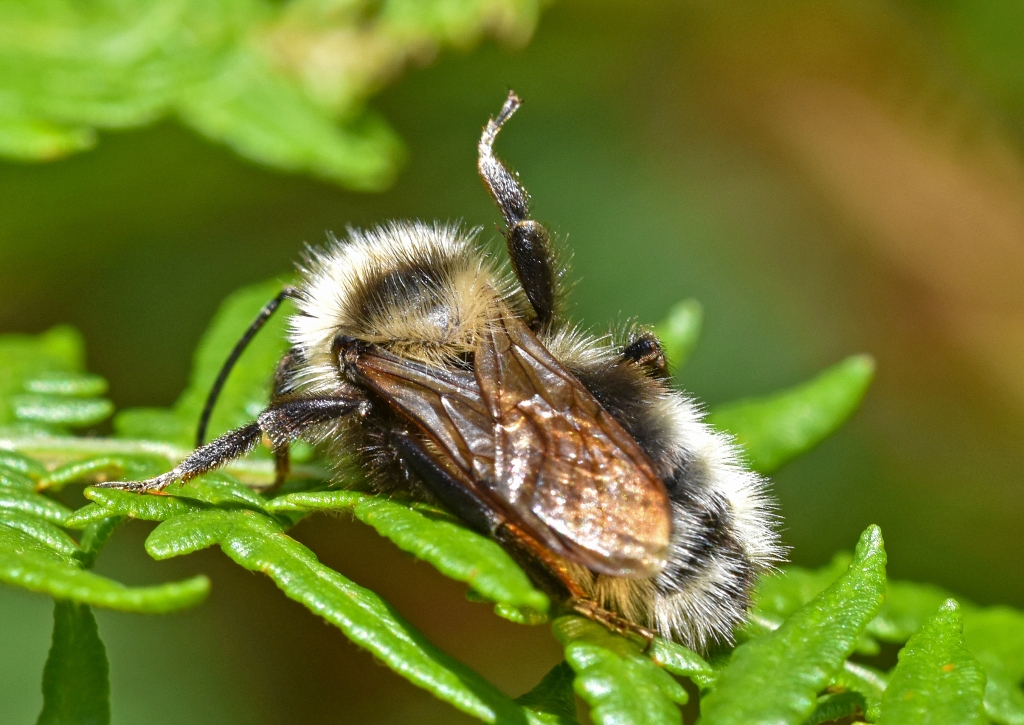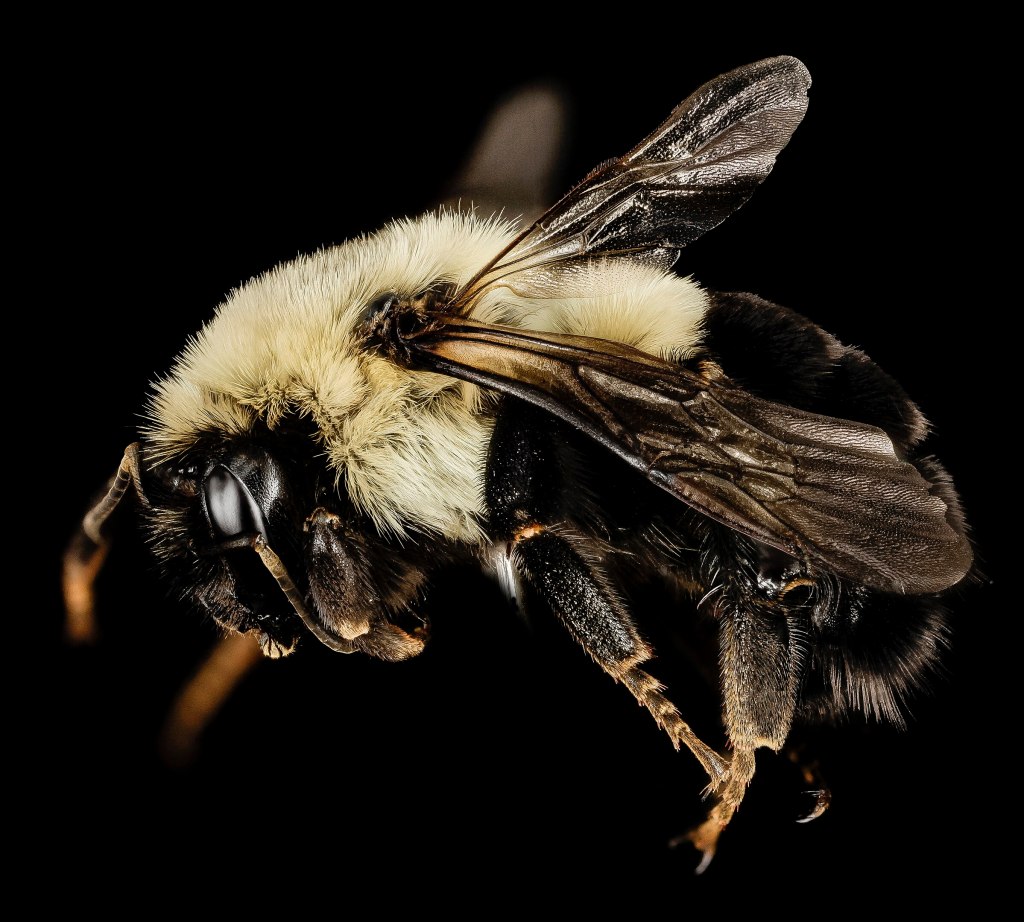Bumblebees sometimes raise a leg, or two, when they feel threatened. I first came across this phenomenon myself when following a cuckoo bumblebee with a camera, trying to get a good close-up shot (below).

Macro photographers like myself are usually very respectful of our targets, but sometimes we do pursue an individual as it flies about, from flower to flower, or plant to plant, taking a series of pictures and trying to get closer and closer. In this case, the bee was saying: back off!
Although commonly observed, this leg-raising behaviour, which has been given the technical term of a ‘disturbance leg-lift response (or DLR)’, appears to have been little studied and largely undescribed in the literature, until a recent paper by Christopher A. Varnon and colleagues from Converse College, Spartanburg, SC, USA. See Varnon et al., 2021.
The first leg to be lifted by a bumblebee which feels threatened, is usually the middle leg, but sometimes other legs and more than one leg will be raised (see below).

Artwork by Jennifer Salazar. Original reference photographs by Ivan Mikhaylov. From Varnon et al., 2021.
The researchers used captive workers of the North American bumblebee, Bombus impatiens, in experiments to investigate the function of the ‘disturbance leg-lift response’.

Varnon et al. found that this leg-lifting response is an honest signal that indicates that stinging may occur. It is honest in the sense that the bee is not bluffing. It really could sting you. The behaviour was found to often precede stinging, but it rarely precedes biting alone.
The authors suggested that the DLR of bumblebees functions in an ‘aposematic or venom-based pursuit deterrence role’. In other words, alerting a potential predator that it has been detected by the bee, and, furthermore, it is signalling to the predator (maybe a bird) that it is dangerous. Many of us have had to learn the hard way that bees have a stinger loaded with potent neurotoxic venom!
In other words the bee is saying: I see you, but please note that I am armed and dangerous! An innate antipredator response.
Some people have interpreted this leg-raising behaviour as a ‘high five‘ gesture from the bee rather than a warning signal! Try Googling ‘bumble bee high five‘, and a number of videos appear of people stimulating the response in a bumblebee.
Poking a bee to see it raise a leg is relatively harmless fun I suppose, but the pokers need to realise that the bee is giving them a warning signal that a sting may occur. It’s no fun for the bee to be poked, and we need to maintain a healthy distance and respect the fact that it is working to provide for its colony.
The bees are using this innate response to tell us that they see our lumbering form approaching from behind (usually), and they are sending us a message that they deserve to be respected and avoided. If we don’t want to get a painful sting, that is.
In reality, bumblebees are peaceable insects that rarely sting, but they can do so if provoked.
Reference
Varnon, C. A., Vallely, N., Beheler, C., & Coffin, C. (2021). The disturbance leg-lift response (DLR): An undescribed behavior in bumble bees. PeerJ, 9, e10997. https://peerj.com/articles/10997/
Very interesting! I believe I’ve seen leg lifting in spiders, but it is usually their front legs, and perhaps is more about attempting to capture prey, rather than warning off anyone getting too close for comfort. You’ve opened up a whole new observational topic!
I’ve just read the paper. Remarkable aspect of bee body language. Never heard of this before. Thank you for sharing.